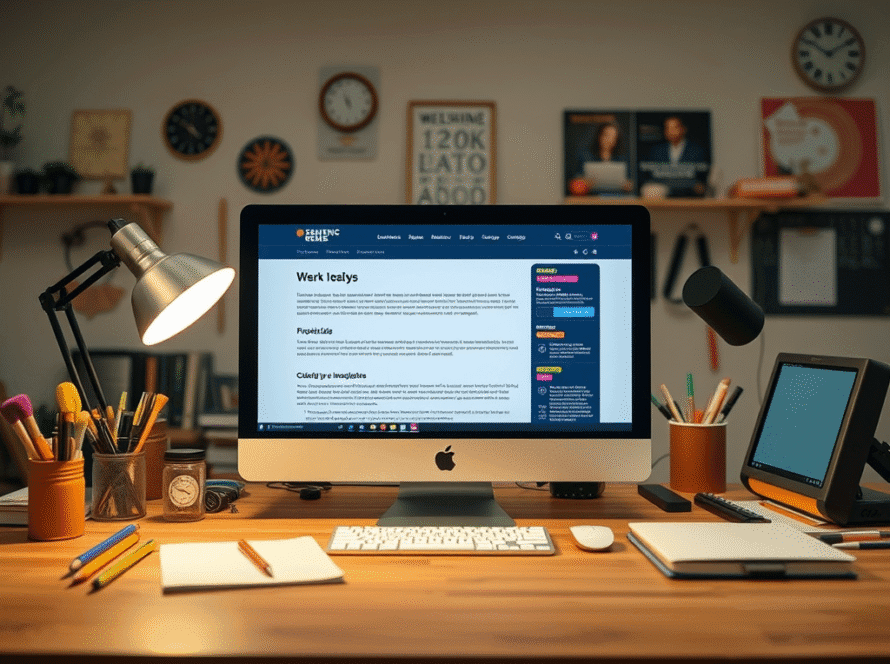Let’s get one thing clear: your website isn’t a one-time project. It’s a living, breathing part of your business that needs attention — not just to stay fresh, but to stay functional, relevant, and profitable.
Whether you built your site last month or five years ago, the question isn’t if it needs updates. It’s how often — and what kind of updates actually matter.
This guide walks you through:
What should be updated and when
How often to review key areas
Why ongoing updates matter for SEO, UX, and business growth
Why Website Updates Matter
Think of your website like a vehicle. It might look fine from the outside, but if you never change the oil, rotate the tyres, or update the software, it’s eventually going to break down.
Updating your website regularly helps you:
Keep your content accurate and aligned with your business
Protect against security risks and outdated software
Improve SEO rankings with fresh, relevant content
Enhance user experience and conversion rates
Stay ahead of competitors who are also evolving
In short: updating your website is an investment in your business.
Monthly Website Updates
✅ Software & Plugin Updates
WordPress core
Theme and plugin versions
Remove any unused plugins or add-ons
✅ Form Testing
Submit a contact form or enquiry form to ensure it works
Check that notifications go to the correct email address
✅ Security & Performance Checks
Run malware scans
Check for broken links
Monitor site speed (PageSpeed Insights, GTmetrix)
Why monthly matters: Delaying these can leave your site vulnerable to hacks, slowdowns, or breakage.
Quarterly Website Updates
✅ Content Review
Are services or products still accurate?
Are team members, pricing, or operating hours current?
Does your homepage or About page reflect any recent changes?
✅ Analytics Review
What pages are performing best?
Where are visitors dropping off?
Are your calls-to-action converting?
✅ SEO Maintenance
Refresh meta descriptions and page titles as needed
Update blog content to maintain keyword relevance
Add internal links to new or existing content
Why quarterly matters: Content and SEO lose relevance if left untouched — quarterly reviews keep things sharp.
Annual Website Updates
✅ Design & UX Review
Is your design still current, fast, and responsive?
Are there features your competitors have adopted?
Does the site feel modern and aligned with your brand?
✅ Strategy Alignment
Does your site still support your business goals?
Are you targeting the right audience?
Is it time to upgrade tools, hosting, or integrations?
✅ Legal and Compliance
Update your privacy policy or terms if laws have changed (like data collection regulations)
Ensure accessibility standards are met (especially WCAG compliance)
Why annual matters: Your website is your digital headquarters — it should evolve with your business.
When to Update More Frequently
Some situations call for faster cycles. You may need to update weekly or even daily if:
You run an online store with changing stock or promotions
You blog or publish news regularly
Your business model is seasonal or fast-moving
You’re running campaigns or ads that require landing page updates
In these cases, you should treat your website like an extension of your operations — not a separate “thing.”
What Happens If You Don’t Update?
If you ignore your website for too long, here’s what can happen:
Broken contact forms or features you didn’t notice
Declining SEO rankings due to stale content
Hacked or blacklisted sites from outdated software
User frustration from poor mobile experience
Outdated messaging that confuses potential leads
We’ve seen businesses lose thousands in missed opportunities or recovery costs — all because of avoidable neglect.
Tools to Help You Stay On Track
🛠️ Maintenance Plugins
WP Umbrella, ManageWP, or MainWP to manage updates and backups
Wordfence or iThemes for security
🧠 SEO Monitoring
RankMath SEO plugin
Google Search Console
Ubersuggest or Ahrefs
📊 Analytics
Google Analytics or Fathom
Heatmaps like Hotjar or Microsoft Clarity
📆 Scheduling Tools
Use a calendar tool or project manager (Notion, Trello, Asana) to create a monthly/quarterly checklist
Final Thoughts: Consistency Over Perfection
You don’t need to overhaul your site every week — but you do need to commit to regular care.
A little attention each month beats a massive scramble after something breaks.
Treat your website like you would a key team member:
Keep it informed
Help it stay efficient
Let it grow with your business
If you’re not sure where to start or how to fit updates into your schedule, we can help.
📞 Book a website check-in session
💬 Let’s create a care plan that fits your goals
🌐 bitstreammedia.com.au



